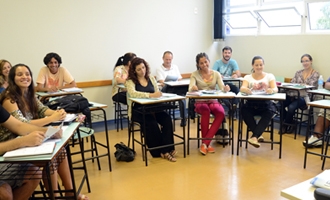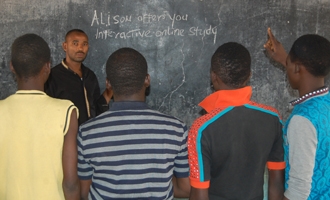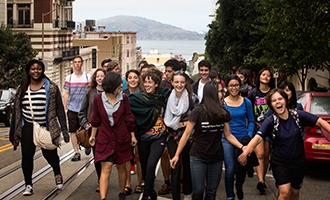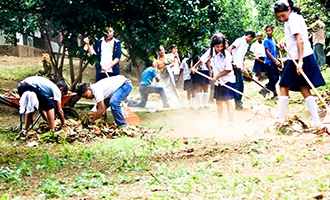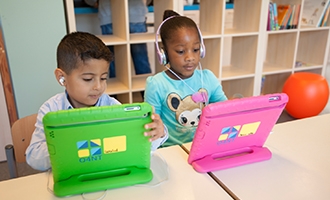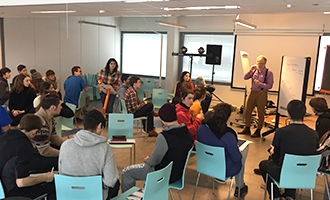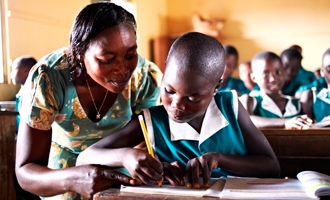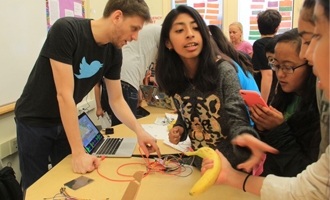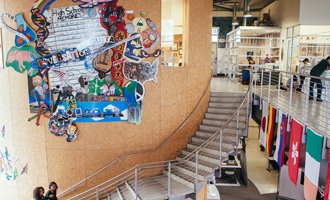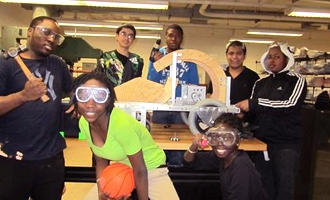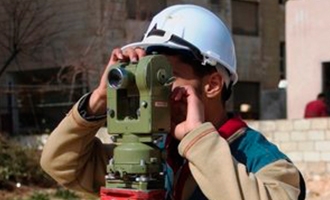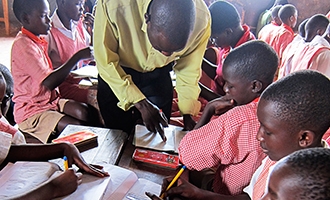

21st Century Skills
The term 21st Century Skills refers to a range of knowledge, skills, abilities that educators and researchers believe will help students succeed not only in their academic and professional career, but also in their personal and community life. Often the term is replaced by synonyms such as non-cognitive, interdisciplinary, transversal or socio-emotional skills. These capabilities transcend the learning expectations related to academic content, and can be included in the teaching of all school subjects.
Find out more:
>> 21st Century Skills definition, Edsurge
There is no single definition, however, for the individual parts that comprise this set of skills. One of the most common approaches to defining 21st century skills are the 4Cs: communication, collaboration, creativity and critical thinking. The OECD (Organization for Economic Cooperation and Development) adopts a definition for socio-emotional skills that involves the abilities to achieve goals (perseverance, self-control, enthusiasm for achieving goals), working with others (cordiality, respect, care) and managing emotions (calm, optimism and confidence).
The ATC21S Group at the University of Melbourne, in collaboration with governments, international organizations, researchers, businesses and teaching institutions, divides the competencies into four categories: ways of thinking (creativity and innovation, critical-thinking, problem-solving, decision-making, learning to learn and metacognition), tools for working (information literacy and information and communication technology literacy), ways of working (communication and collaboration) and ways of living in the world (citizenship, life and career, personal and social responsibility).
Regardless of the definition used, the perception is growing that academic knowledge does not prepare young people to deal with the major issues of our times, or to achieve their life projects and to pursue their professions in a changing world. The teaching of such skills has become a major focus in some schools, as in The Future School Program in Beijing, China, which integrates project-based learning, carried out collaboratively, and encourages experimentation to develop skills such as creativity and critical thinking.
Personalized Learning
The term personalized learning refers to teaching strategies aimed at understanding and promoting the development of students in an individualized manner, respecting the limitations and talents of each one. It takes into account the fact that students learn in different ways and at different speeds, and that their previous knowledge, skills and interests may vary greatly.
While the concept of seeing the student as an individual and promoting his or her autonomy emerged before the 21st century, personalization has become a more important tendency today due to the possibilities that technology offers to put such ideas into practice, and to the demands of society.
Find out more:
>> Personalized Learning: how to construct a student-centered learning process, Porvir
>> Personalized Learning definition, EdSurge
If in the 20th century it made sense to divide students into classes by age and offer them standardized learning that would prepare them to perform repetitive activities in large groups, schools today need to train young people to work in smaller, more varied teams, use digital resources to produce and communicate, and solve complex problems. The teaching process that offers a single, unvarying solution, centered on the transmission of knowledge by the teacher, does not help students to develop their life projects and, even more seriously, is disconnected from other sectors of contemporary life.
Different strategies are used to promote personalized learning, some centered on the use of adaptive platforms that enable blended learning, methodology used in the Summit Public Schools network in the USA, and others that use nondigital methodologies, such as mentoring, a process in which an adult provides students with guidance on topics such as their academic schedule, life planning, difficulties outside the school context and communication with family. At Colégio Estadual Chico Anysio, in Rio de Janeiro, high school students take part in an orientated study program, where an educator helps them learn how to study.
Hands-on Learning
New methodologies that seek to develop learning through practical experience have emerged to challenge traditional educational thinking, which is based on theory and the transmission of content that is often out of touch with the student’s reality. These processes, which challenge students to build knowledge through the development of a project or a product are teaching strategies which form part of tendency described as hands-on.
Find out more:
>> Make Movement Definition, Edsurge
Neurological studies have shown that the brain activity of students is more intense when they take part in interactive educational activities and practices than when they simply attend lectures. At Stanford University (USA), for example, the Transformative Learning Technologies Lab studies the impact of using different technologies for learning through project work. In a recent study, researchers analyzed what happened when students first came into contact with material through a practical activity, to be followed later by theoretical study. The researchers concluded that the student absorbed knowledge better when he or she had the opportunity to experiment first, and come into contact with theory later.
Opportunities for hands-on learning can occur both through the use of technological tools such as digital manufacturing and robotics laboratories, and through participation in interdisciplinary projects, which do not necessarily require the use of technology. The global challenge Design for Change, for example, encourages children to think about changes they would like to make around them. Students then create projects ranging from challenging the superstitions of the older members of rural communities, to finding a way to earn money to buy computers for their school. Meanwhile the international movement Fab Education provides support for schools to build laboratories (FabLabs) equipped with machines such as 3D printers, milling machines and laser cutters, for integrated learning of science, technology, engineering and mathematics.
Community based learning
Understanding that learning does not just take place in schools is the basis for a series of educational methods and programs that use the surrounding community to promote the development of students. The approach includes activities that connect students with the communities around them, through the use of city spaces such as museums, parks, cultural centers, businesses and clubs.
These practices are based on the assumption that, by broadening the range of education sites, the community also becomes responsible for the education of children and young people. Without walls, the idea that only teachers and experts possess knowledge is removed and all residents, and even the neighborhood businesses and institutions which surround schools, can contribute their experience and knowledge to constructing learning, which also contributes to the development of the community.
Find out more:
>> Community Based Learning definition, The Glossary of Education Reform
Community based learning occurs in various ways, with some projects simply using community resources to promote learning, and others going further by planning interventions in the community. In the former case, it is possible to relate curriculum content to explorations of the environment close to the school, such as by conducting research into animals living in the area, or promoting lectures from individuals or groups that bring their knowledge and experience to students. Other projects mobilize students to be more active in the community, perhaps by encouraging them to carry out internships at local businesses, or through investigating neighborhood problems and proposing solutions.
The use of community based learning can evolve from schools and universities opening themselves up to their surroundings, such as the Minerva Project, a mobile higher education institution without a permanent campus, where some learning modules take place in virtual form and others in large cities of the world, or the result of greater coordination, involving different groups from within the city, such as the Ciutat Vella project, which turned Barcelona into an “educating city”.
New credentials
In the modern world, where learning opportunities are diversified and do not merely occur through the transmitting of content within schools and universities, diplomas that represent the completion of educational steps no longer effectively prove the complete knowledge and skills of students and professionals. In order to recognize knowledge acquired throughout life in a modular manner and through different educational experiences such as online courses, internships in laboratories, the undertaking of projects and volunteer work, new forms of certification are required.
Find out more:
>> Badges definition, Edsurge
Through tools and products that formalize different experiences, an engineering professional can show that he has the skills to write reports, for example, or a high school student can prove that he is a competent programmer. Documentation of such skills does not replace traditional degrees, but generates mini-certificates that result in a more comprehensive and personalized portfolio for professionals and students, who are then more able to earn course places or secure job opportunities.
Additionally, by emphasizing new ways of learning, new credentials can also provide benefits for businesses. Employers who recognize skills that go beyond the school curriculum when choosing successful applicants will be better equipped to form more productive and diverse teams.
Among the examples of new credentials described here by InnoveEdu are the Open Badges project, developed through a partnership between the Mozilla Foundation and the MacArthur Foundation, which distributes badges that certify learning acquired virtually or in person and can be added to social networking profiles, employment websites and blogs. The Udacity online course platform offers a nanocertificate (nanodegree) for courses that develop specific skills for the labor market.
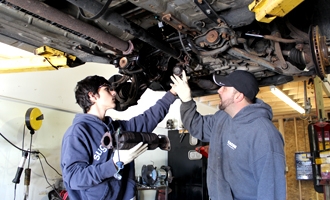
This NGO places the student at the center of the learning process, beginning with the...
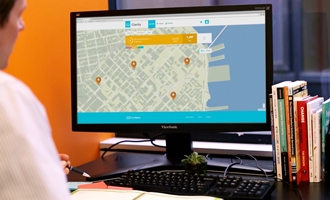
Created in 2012, this platform aims to help schools and governments to discover, based...
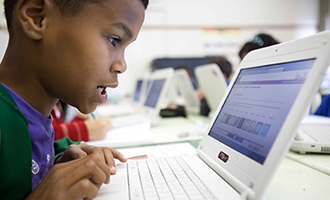
An adaptive platform that offers free content in various subjects with interactive...
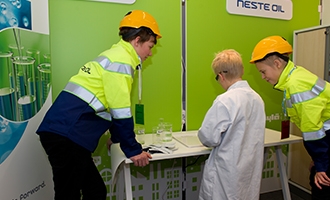
The Finnish project takes children from the sixth year of elementary education to...
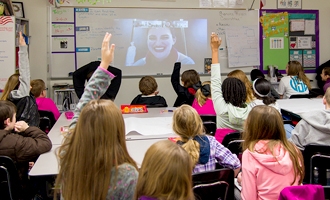
Created in the United States, the platform helps teachers bring their classes closer...
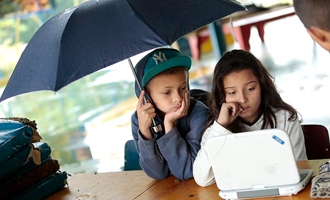
The aim of this school located in the metropolitan region of São Paulo is to...

